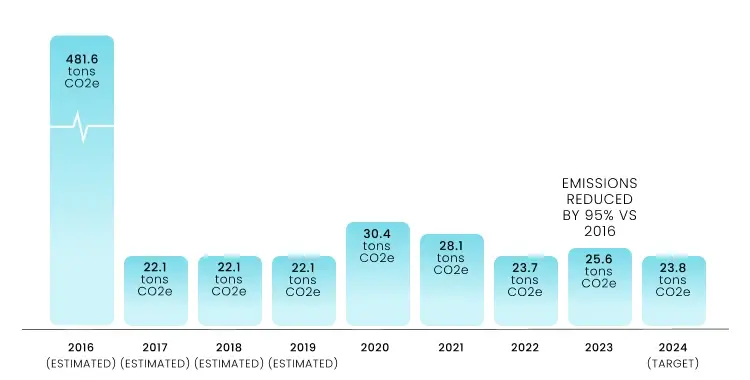We measure carbon emissions
for all customer orders.
With help from external experts and the award winning 2030 Calculator, we estimate the carbon footprint for every product we sell, its packaging, and the shipping to bring it to your door.
We include complimentary carbon offsetting for every order.
Each time you order from Childrensalon, we automatically offset emissions for your entire order — products, packaging, and delivery — by supporting certified carbon offsetting projects that accelerate emissions reductions throughout the fashion industry.
Globally, the majority of textiles are produced in countries where factories run on energy produced from burning coal. For example, India is the world's second largest textile exporter, and 70% of its energy comes from coal (as of 2020). This contributes to the fashion industry's significant greenhouse-gas emissions. And while only 7% of the garments we sell are made in India, to help our whole sector (and planet!), we fund 13 renewable energy projects that supply clean energy to textile factories across India.
Each of our projects has been carefully vetted and is certified by an internationally recognised carbon offsetting standard. This means that in addition to producing genuine and immediate climate benefits, our projects also bring positive social impacts to nearby communities — like jobs, education, and improved welfare.

Emissions Reductions in our Onsite Operations
All emissions since 2020 have been externally verified and reported in-line with the SECR and ESOS requirements set by the UK government; prior emissions have been estimated based on historic energy consumption data. From 2020 to 2023 we achieved an absolute 16% reduction in emissions from energy consumed in our onsite operations; and we’re targeting a further 7% year-on-year reduction in each of the coming two years.
from our offices and warehouses by 95%."
Our progress towards Net Zero.
We've worked hard to eliminate most greenhouse-gas emissions from our onsite operations. In 2023, direct emissions from our offices and warehouses were just 25.6 tons of CO2e — this is roughly the same as annual emissions for three typical families living in the UK.
Our offices and warehouses are all zero-waste-to-landfill; our entire warehouse vehicle fleet is 100% electric; and all electricity used onsite comes from renewable sources — either our own solar panels or through a green energy tariff that supports investment in renewable energy infrastructure elsewhere in the UK.
As we work towards Net Zero emissions by 2050 (in-line with the UK's commitment and guidance from the Intergovernmental Panel on Climate Change), we'll keep reducing emissions onsite and from our supply chain, and we'll share progress updates annually.
We're focusing on lower-impact materials and circularity.
To meet our goal to reduce carbon emissions per order by 50%, we'll be working closely with our brands — starting with our in-house brands — and promoting more products that incorporate circular design and lower-carbon materials to improve the impacts of our products by 2030.
